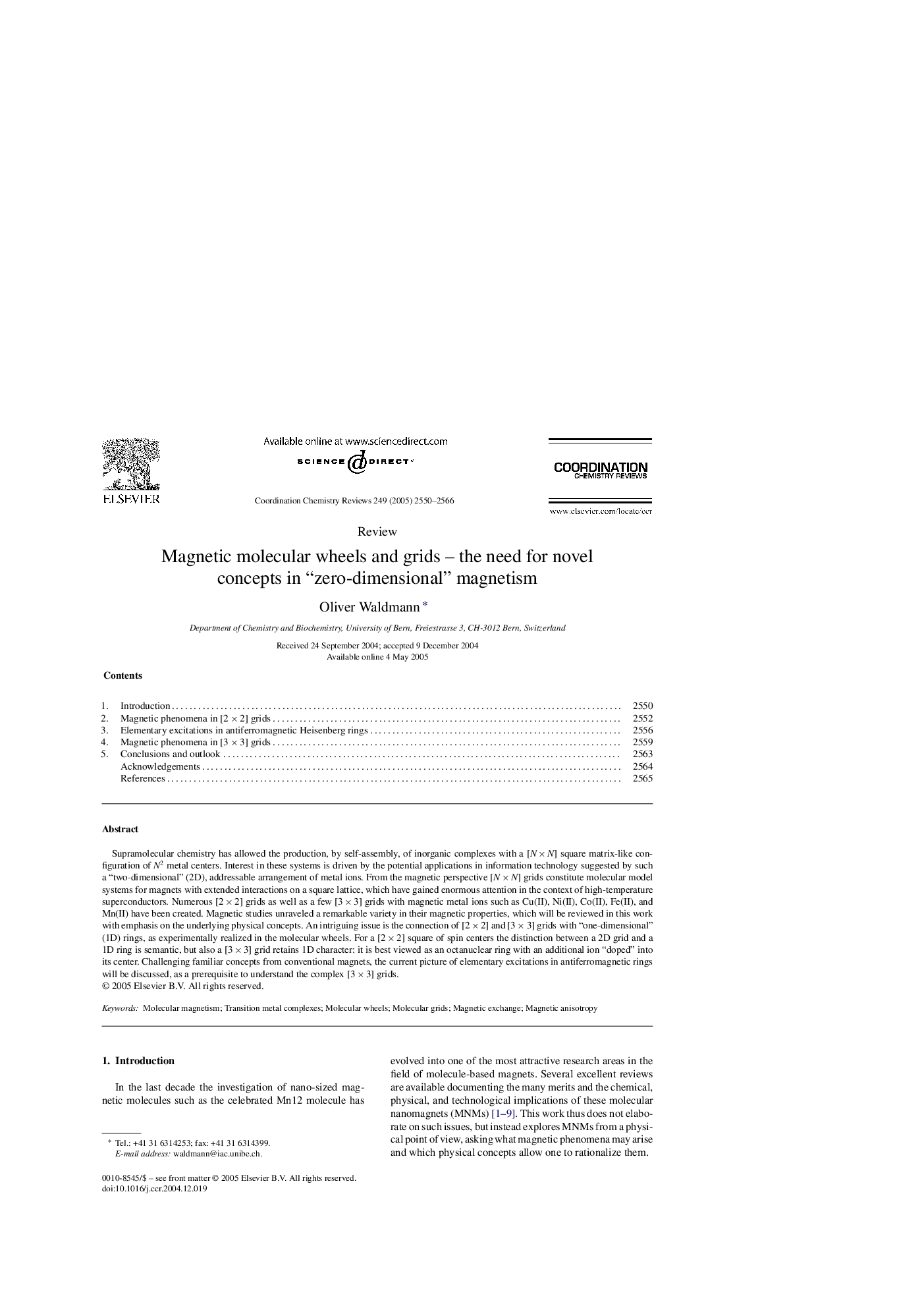| Article ID | Journal | Published Year | Pages | File Type |
|---|---|---|---|---|
| 1300180 | Coordination Chemistry Reviews | 2005 | 17 Pages |
Supramolecular chemistry has allowed the production, by self-assembly, of inorganic complexes with a [N × N] square matrix-like configuration of N2 metal centers. Interest in these systems is driven by the potential applications in information technology suggested by such a “two-dimensional” (2D), addressable arrangement of metal ions. From the magnetic perspective [N × N] grids constitute molecular model systems for magnets with extended interactions on a square lattice, which have gained enormous attention in the context of high-temperature superconductors. Numerous [2 × 2] grids as well as a few [3 × 3] grids with magnetic metal ions such as Cu(II), Ni(II), Co(II), Fe(II), and Mn(II) have been created. Magnetic studies unraveled a remarkable variety in their magnetic properties, which will be reviewed in this work with emphasis on the underlying physical concepts. An intriguing issue is the connection of [2 × 2] and [3 × 3] grids with “one-dimensional” (1D) rings, as experimentally realized in the molecular wheels. For a [2 × 2] square of spin centers the distinction between a 2D grid and a 1D ring is semantic, but also a [3 × 3] grid retains 1D character: it is best viewed as an octanuclear ring with an additional ion “doped” into its center. Challenging familiar concepts from conventional magnets, the current picture of elementary excitations in antiferromagnetic rings will be discussed, as a prerequisite to understand the complex [3 × 3] grids.
